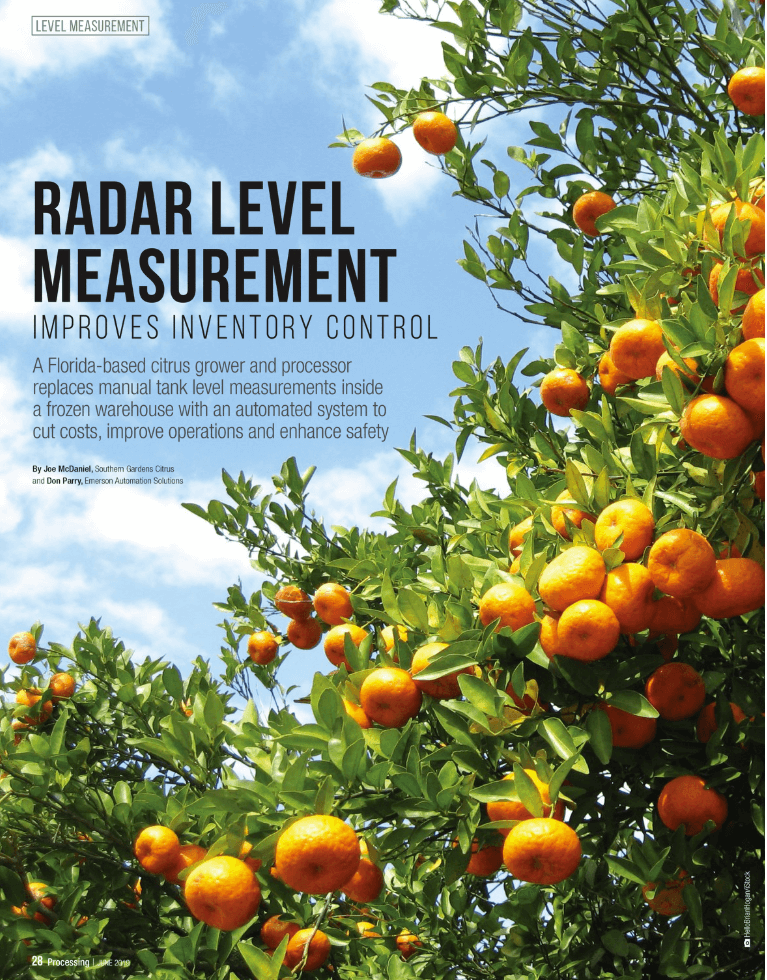Just imagine that you’re an operator in a facility that makes concentrated orange juice and the production process requires you to manually check the levels of large processing tanks in the freezing process conditions. Parkas and gloves are a part of your work attire.
These were the conditions as told in an excellent story told in Processing magazine, Radar Level Measurement Improves Inventory Control for Citrus Processor, by Emerson’s Don Parry and a controls engineer with the South Florida orange grower/processor.
 They opened describing this processing plant’s scale as:
They opened describing this processing plant’s scale as:
…capable of processing up to 180 million pounds of oranges a year. The facility can store 56 million gallons aseptically, and ship and receive more than 100,000 tankers annually.
The process involves evaporating the water from fresh orange juice to create a very viscous fluid. This concentrate is stored in 16 tanks, each of which:
…is 32 feet in diameter by 32 feet tall with a capacity of 186,514 gallons [706K liters].
The room containing these tanks:
…is a frigid 16 °F (-9 °C), with a lot of internal air movement.
The control challenge in measuring tank levels is that the viscous fluid can foam, and this foam can freeze. Originally, these tanks were installed with:
…ultrasonic acoustic level instruments designed to determine the level in each tank reading from mounts on the tank roofs.
These instruments were not able to provide accurate readings of the true level in the tanks for inventory control due to the frozen foam and other maintenance issues. Because they could not provide accurate measurements, these instruments:
…were removed from service. Operators had to check the tank levels on a daily basis by hand, using manual measuring devices.
Unfortunately, these manual level measurements could take up to 30-minutes per tank, which translated into up to 8 hours per day for the operations staff in these freezing conditions.
There had to be a better way…
I don’t want to spoil this story’s ending other than to say it has a happy ending that involves Rosemount 5402 Non-Contacting Radar level transmitters. I’ll invite you to read the article to see why this technology could handle these challenging environmental and level measurement conditions.
I’ll invite you also to connect and interact with other level measurement experts in the Measurement Instrumentation group in the Emerson Exchange 365 community and/or at the September 23-27 Emerson Exchange conference in Nashville.

